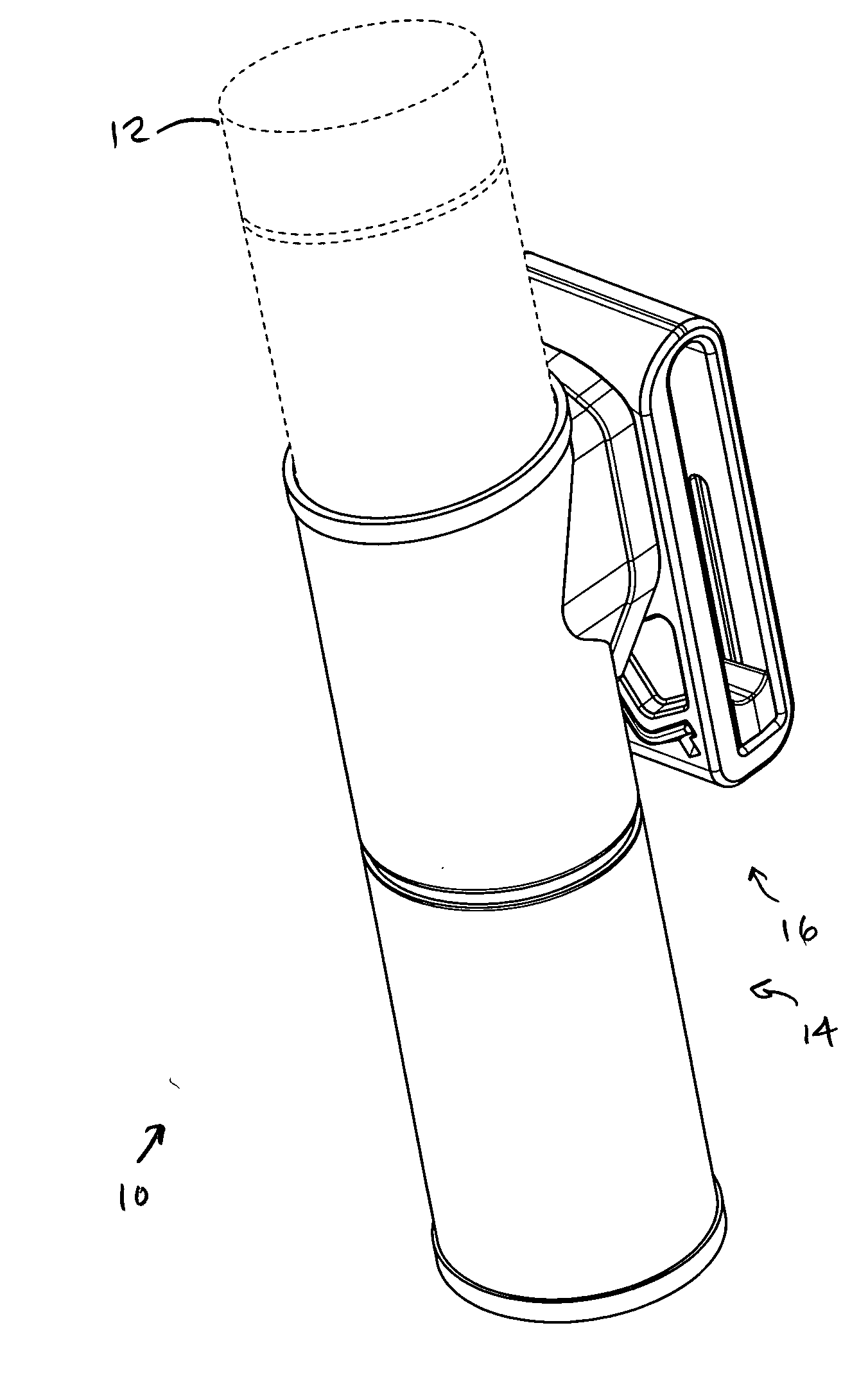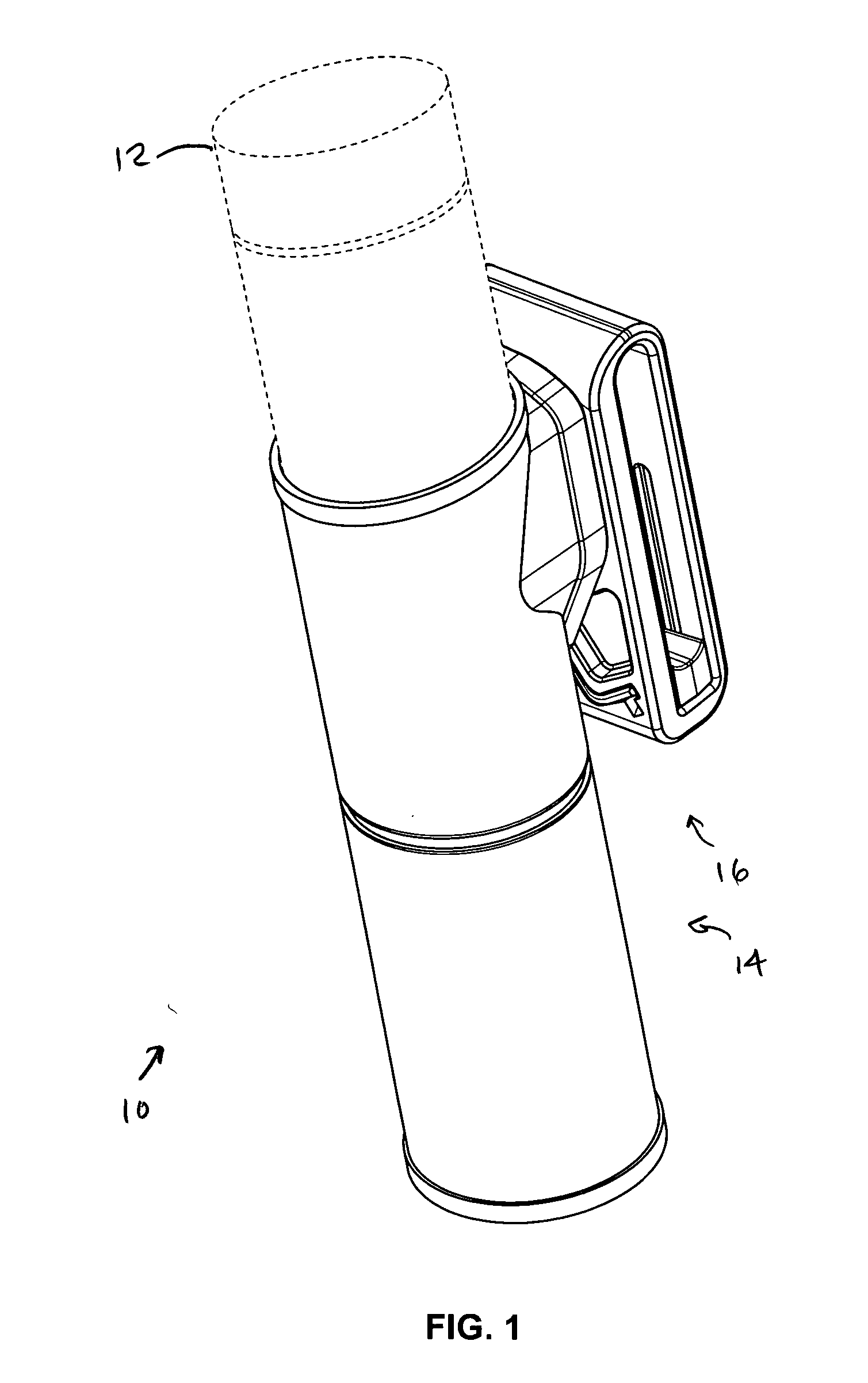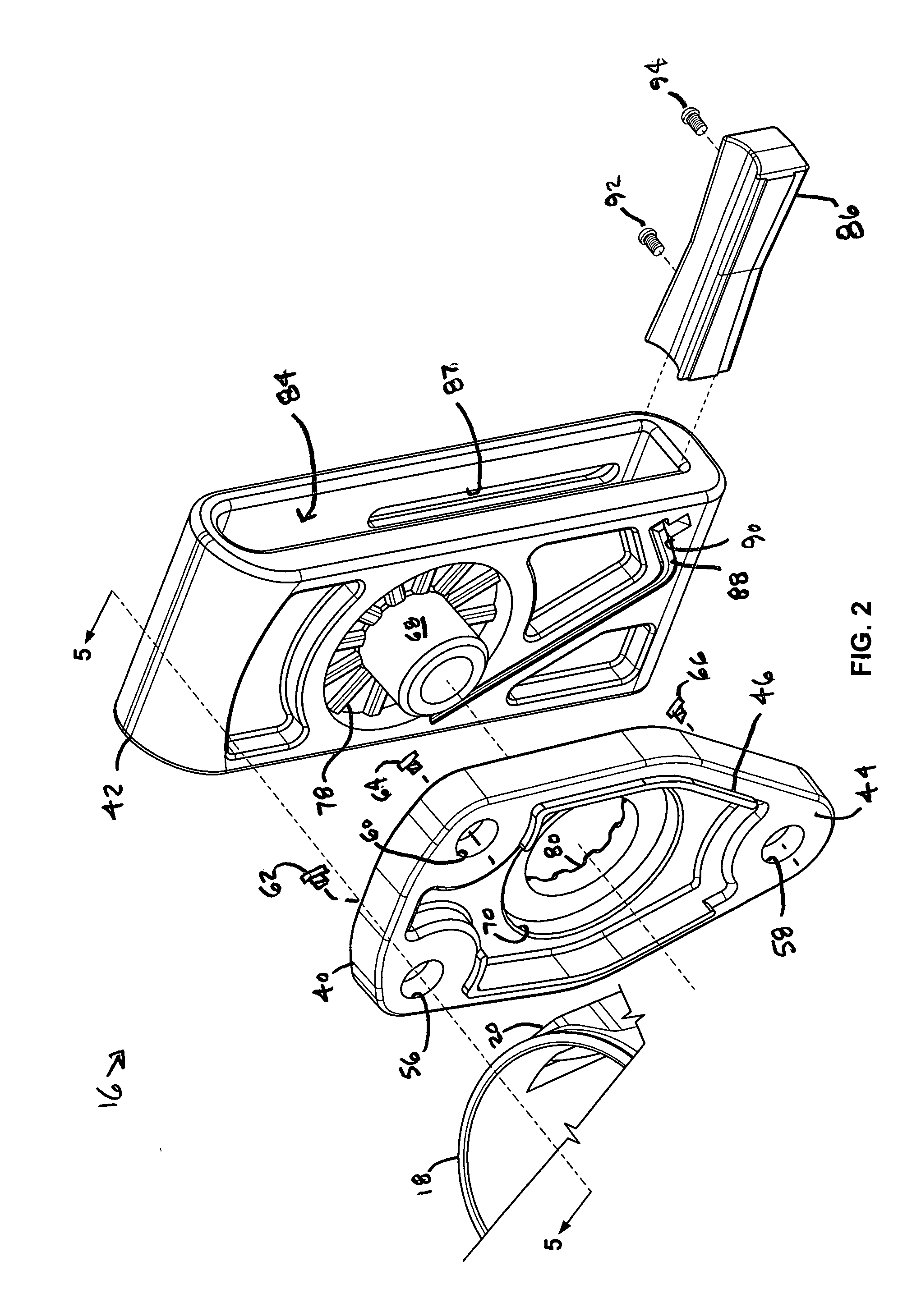Low profile baton scabbard
- Summary
- Abstract
- Description
- Claims
- Application Information
AI Technical Summary
Problems solved by technology
Method used
Image
Examples
Embodiment Construction
[0017]FIG. 1 is a front perspective view of a low-profile baton scabbard 10 shown generally in accordance with an illustrated embodiment of the invention. Also shown in FIG. 1 is a baton 12 (shown in phantom) disposed within the scabbard 10.
[0018] The scabbard 10 includes a baton receiver 14 and a belt clip assembly 16. The receiver 14 is constructed of a relatively thin, lightweight tubular body 18 that is substantially continuous in the axial and annular directions. The tubular body 18 may be fabricated of any appropriate light weight material (e.g., plastic, delrin, acetel, polycarbonate, etc.).
[0019] The upper portion of the tubular body 18 (adjacent the belt clip assembly 16) may be provided with a slanted top 19 (FIG. 5). The slanted top 19 may be slanted downward on an outside of the receiver 14 from horizontal by some appropriate angle 17 (e.g., eight degrees) to facilitate easy insertion of the baton 12 into the scabbard 10.
[0020] The tubular body 18 may also include a b...
PUM
 Login to View More
Login to View More Abstract
Description
Claims
Application Information
 Login to View More
Login to View More - R&D
- Intellectual Property
- Life Sciences
- Materials
- Tech Scout
- Unparalleled Data Quality
- Higher Quality Content
- 60% Fewer Hallucinations
Browse by: Latest US Patents, China's latest patents, Technical Efficacy Thesaurus, Application Domain, Technology Topic, Popular Technical Reports.
© 2025 PatSnap. All rights reserved.Legal|Privacy policy|Modern Slavery Act Transparency Statement|Sitemap|About US| Contact US: help@patsnap.com



